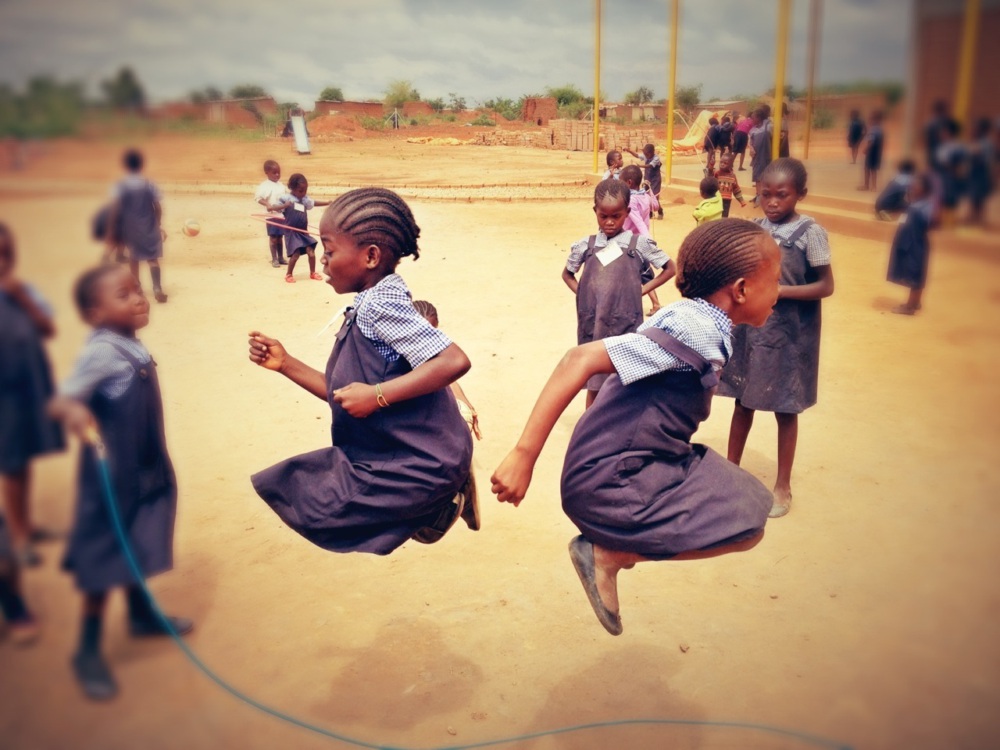Em parceria com a Children's Investment Fund Foundation (CIFF), o Fundo Global para Crianças (GFC) tem uma oportunidade única de mudar esta dinâmica em relação ao Primeira Conferência Ministerial Global sobre o Fim da Violência Contra as Crianças em Bogotá, Colômbia, de 7 a 8 de novembro de 2024.
A Conferência Ministerial representa uma oportunidade única de colocar a violência contra crianças em primeiro plano na agenda internacional e construir solidariedade entre os movimentos de direitos das crianças, violência contra crianças (VAC) e violência de gênero (GBV) para criar objetivos e compromissos compartilhados por meio de conexões transnacionais.
A GFC criou um Grupo Consultivo de 8 a 12 indivíduos para ajudar a informar as seguintes ações:
- Fortalecer as conexões entre organizações de base, redes e grupos que trabalham com violência contra crianças e violência de gênero;
- Aumentar as oportunidades para que crianças e jovens sobreviventes se envolvam e influenciem campanhas e mensagens públicas em torno da Conferência Ministerial; e
- Criar espaço para ações de longo prazo para traduzir os compromissos assumidos na Conferência Ministerial em ações no nível de base.
O grupo consultivo é composto por representantes de parceiros comunitários do GFC, membros do Conselho de Liderança Juvenil do GFC e dois participantes do programa que compareceram à Cúpula das Adolescentes de 2024 na África Ocidental.
Um rico conjunto de evidências demonstra a inter-relação crítica entre a violência de gênero (VBG) e a violência contra crianças (VAC). Essas questões são interconectadas e se reforçam mutuamente, e se cruzam com outras formas de opressão sistêmica que impactam desproporcionalmente populações vulneráveis, particularmente mulheres, meninas e indivíduos não conformes com o gênero de grupos marginalizados (ONU Mulheres, 2021; UNICEF, 2020).
Entender a relação próxima entre VAC e GBV, e investir em suas interseções, é vital para entender verdadeiramente as complexidades das vidas de crianças e jovens e suas experiências de violência. As principais oportunidades incluem:
- Aplicando uma abordagem holística à prevenção da violência: A integração de ambas as agendas resulta em uma compreensão abrangente de suas interconexões, levando a estratégias de prevenção e intervenção mais eficazes.
- Atribuição conjunta de recursos:A combinação de esforços pode melhorar a alocação de recursos e o compartilhamento de conhecimentos entre organizações e partes interessadas.
- Maior poder de advocaciar: Uma agenda unificada pode ampliar os esforços de advocacy, facilitando a influência de políticas e a obtenção de financiamento.
- Sistemas de apoio melhorados e interseccionais: Abordar ambas as formas de violência em conjunto pode criar sistemas de apoio mais inclusivos e abrangentes, levando a melhores resultados.
- Desenvolver estratégias que sejam culturalmente sensíveis e específicas ao contexto : Desenvolver estratégias específicas ao contexto e culturalmente sensíveis é crucial para uma intervenção eficaz.
Apesar dos esforços contínuos para abordar essas questões, VAC e GBV muitas vezes permanecem ocultas devido ao estigma, silêncio e falta de plataformas para sobreviventes e comunidades afetadas compartilharem suas experiências. Crianças, jovens e grupos marginalizados estão em uma posição única para destacar essas realidades de VAC e GBV e defender as mudanças urgentes que são necessárias em seus diferentes contextos.
Mensagens-chave:
Mensagem 1: Pesquisa sobre violência doméstica e direitos das crianças, especialmente em áreas rurais
O que: Invista em pesquisa liderada pela comunidade sobre violência doméstica e direitos das crianças, com foco em áreas rurais e suburbanas para abordar lacunas críticas em conhecimento, programas e políticas. É necessária uma abordagem abrangente que abrace a diversidade e considere as experiências únicas de povos indígenas, comunidades afrodescendentes, pessoas de todos os gêneros e grupos marginalizados.
Como:
- Garantir financiamento de doadores para iniciativas de pesquisa participativa lideradas pela comunidade.
- Colaborar com organizações acadêmicas e comunitárias para conduzir estudos que envolvam vozes e perspectivas locais, com base nas já existentes.
- Utilize resultados de pesquisas para informar e moldar políticas direcionadas e serviços de suporte para comunidades afetadas.
Mensagem 2: Acesso universal aos cuidados de saúde e investimento em infraestruturas de saúde e soluções tecnológicas
O que: Garantir acesso universal à assistência médica investindo em infraestrutura de saúde, incluindo soluções digitais, para fornecer atendimento de qualidade para todos, independentemente da localização ou status socioeconômico. Isso é especialmente crucial para sobreviventes de VAC e GBV, que exigem acesso digno a cuidados abrangentes adaptados às suas necessidades específicas. Dentro dessa abordagem, é importante respeitar as práticas tradicionais de cura das comunidades indígenas.
Como:
- Melhorar a literacia digital e apoiar a inovação na saúde digital para modernizar os sistemas de saúde e eliminar as barreiras ao atendimento
- Promover o empreendedorismo jovem por meio de financiamento, mentoria e parcerias com organizações de saúde e tecnologia para desenvolver soluções inovadoras para desafios de saúde que afetam crianças, especialmente sobreviventes de violência doméstica e violência de gênero.
- Invista em plataformas digitais que ofereçam aos jovens, especialmente sobreviventes de violência doméstica e violência de gênero, espaços seguros e confidenciais para aconselhamento e terapia.
Mensagem 3: Implementar políticas de proteção à criança nas escolas para prevenir abusos e promover a segurança
O que: Implementar políticas abrangentes de proteção e salvaguarda da criança em todas as escolas, incluindo protocolos para lidar com denúncias de abuso e educar professores, alunos e cuidadores sobre segurança pessoal para prevenir o abuso sexual infantil (CSA).
Como:
- Integrar a proteção infantil e a segurança pessoal ao currículo escolar para capacitar os alunos e informar os pais e cuidadores, ao mesmo tempo em que fornece aos educadores treinamento sobre como reconhecer, prevenir e responder à CSA de forma eficaz.
- Estabelecer conselheiros de saúde mental em escolas e universidades para apoiar o bem-estar emocional de crianças e jovens, especialmente sobreviventes de violência doméstica e violência de gênero.
- Fortalecer a coordenação entre as autoridades policiais e as escolas para criar processos de denúncia eficientes e estabelecer ambientes seguros para as crianças.
- Desenvolver e fazer cumprir a adesão às políticas e sistemas de proteção à criança para prevenção e intervenção do abuso sexual infantil
Mensagem 4: Proteja as crianças migrantes vulneráveis do tráfico e da exploração
O que: Proteja crianças e jovens migrantes vulneráveis, especialmente aqueles nas fronteiras, do tráfico e exploração decorrentes de suas situações precárias. Essas crianças e jovens enfrentam riscos significativos de GBV e VAC, com meninas particularmente em risco de violência sexual e meninos vulneráveis à coerção para trabalho exploratório ou gangues. O trauma do deslocamento pode impactar severamente sua saúde mental e bem-estar.
Como:
- Financie e apoie organizações comunitárias para implementar intervenções direcionadas a crianças migrantes, com foco na prevenção e resposta à violência doméstica e familiar e à violência de gênero.
- Atender às necessidades específicas de crianças em diferentes estágios de mobilidade – origem, trânsito e retorno – desenvolvendo estratégias específicas ao contexto que priorizem sua proteção e saúde mental, especialmente em relação aos riscos de VBG e VAC durante as transições.
Mensagem 5: Financie e apoie jovens e grupos liderados por jovens para lidar com a violência de gênero e violência doméstica
O que: Fornecer financiamento e apoio a jovens e grupos e organizações liderados por jovens para lidar com a VBG e a VCC.
Como:
- Ofereça subsídios flexíveis e plurianuais diretamente a jovens ativistas e grupos e organizações formais e informais liderados por crianças/jovens para lidar com questões que os afetam.
- Fornecer suporte e acompanhamento adicionais, como capacitação em monitoramento, avaliação e aprendizagem, para fortalecer iniciativas lideradas por jovens que abordam a VBG e a VCC.
Mensagem 6: Integrar a Educação Sexual Abrangente (ESB) nas Escolas e Comunidades para Prevenir a VBG
O que: Introduzir a ESC obrigatória nos currículos escolares e nos programas comunitários como estratégia para prevenir a VBG
Como:
- Treinar educadores para oferecer educação sexual e sexual adequada à idade de forma eficaz, abordando tópicos como consentimento, masculinidade saudável, reconhecimento e abordagem da violência de gênero relacionada à escola e gerenciamento da higiene menstrual para ajudar as meninas a se sentirem seguras, confiantes e incluídas.
- Apoiar e treinar pais, membros da comunidade, líderes religiosos e outras partes interessadas importantes para defender e implementar a ESC em suas comunidades.
Mensagem 7: Reforçar o apoio jurídico às sobreviventes da VBG para garantir justiça e proteção
O que: Aumentar o apoio jurídico para sobreviventes de VBG fornecendo assistência jurídica, representação e treinamento para as autoridades policiais, a fim de garantir acesso à justiça e proteção baseadas em traumas.
Como:
- Aumentar a conscientização sobre os mecanismos de denúncia de VBG nas comunidades.
- Criar leis focadas na proteção e salvaguarda das crianças, com cuidado especial para evitar revitimizá-las.
- Estabelecer tribunais e sistemas de justiça adequados às crianças, com processos confidenciais e informados sobre traumas para denunciar e buscar justiça.
- Equipar profissionais de saúde, assistentes sociais e agentes de justiça com habilidades para atendimento baseado em traumas e estratégias de resposta legal.
- Criar órgãos de monitoramento independentes para garantir a implementação efetiva das leis de proteção à criança e anti-VBG, responsabilizando os perpetradores.
Mensagem 8: Garantir o acesso ao desenvolvimento de liderança para crianças e jovens para prevenir a violência
O que: Garantir que todas as crianças e jovens, especialmente aqueles vulneráveis à violência, tenham acesso a programas de desenvolvimento de liderança e atividades extracurriculares que os capacitem a defender seus direitos e segurança.
Como:
- Proporcionar oportunidades iguais para que crianças e jovens desenvolvam habilidades de defesa, especialmente na prevenção da violência.
- Crie programas de mentoria que conectem crianças e jovens vulneráveis com modelos de liderança para promover segurança e resiliência em suas comunidades.
Mensagem 9: Abordar o impacto das mudanças climáticas nas escolas para acabar com a violência de gênero
O que: Abordar os efeitos das mudanças climáticas nas escolas, concentrando-se especificamente em como os desafios ambientais podem levar ao aumento da violência e da agressão contra meninas.
Como:
- Implementar programas educacionais nas escolas que destaquem a conexão entre as mudanças climáticas e a VBG.
- Incentive crianças e jovens a se envolverem em ações climáticas, oferecendo incentivos que promovam seu envolvimento na criação de um ambiente mais seguro e sustentável.
Mensagem 10: Investir em plataformas digitais para promover a educação e a colaboração em matéria de direitos das crianças
O que: Investir no desenvolvimento de plataformas digitais que promovam educação e colaboração em questões de direitos da criança, fomentando relacionamentos interculturais e internacionais entre escolas.
Como:
- Crie plataformas digitais fáceis de usar que permitam que as escolas compartilhem recursos e colaborem em iniciativas de direitos das crianças.
- Ofereça treinamento para educadores sobre como usar efetivamente essas ferramentas para envolver os alunos em discussões significativas sobre os direitos das crianças.
Mensagem 11: Salvaguardar os direitos digitais e abordar a violência de género online
O que: Promova a segurança online e proteja os direitos digitais de crianças e jovens.
Como:
- Aumentar a conscientização sobre a VBG online e aprimorar a educação e a alfabetização em mídias sociais sobre segurança digital em colaboração com os jovens.
- Implementar políticas e leis destinadas a melhorar a segurança digital e proteger os direitos digitais de crianças e jovens.

